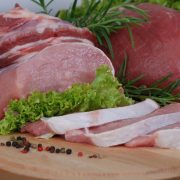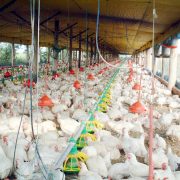Interporc Spain to conquer new markets
The conquest of new international markets and the consolidation of national consumption from the differentiated quality and innovation on the basis of strategic information, the scientific arguments and health are the keys that will shape the future of the pig sector in the coming years to maintain its leadership position. This is one of the conclusions drawn from II Porcino Forum, with the theme “Strategies for a leader” took place in Madrid the Interprofessional Porcine Layer Blanca (Interporc).
The Secretary General of Agriculture and Food, Carlos Cabanas, stressed the leading position of the pig sector in Spain, with an economic dimension of 6,000 million euros, representing 37% of final production to livestock. A sector, he added, that every year breaks its own record of international marketing.
This reveals stated the secretary general in exports this year until August, they reached a volume of 390,000 tonnes of beef and pork products, which represents a 17% increase over the volume to be exported in the same period last year, in which a record was achieved.
Inter president, Manuel García has highlighted the commitment of the pig sector of white layer to sustainability, both environmental as soioeconómica and food. In addition to the continuing effort to overcome all links represented in Interporc that have managed to find their common interests to defend and position. “We have achieved an excellent health status and animal welfare of the Spanish pig, we have demonstrated an enormous capacity to supply, safety, traceability and quality of our productions, allow not only export within and outside the European Union but which they are also the key factors in facilitating access to new markets where we have to continue to grow in addition to the consolidation of the domestic market. ”
The Director of Interporc has insisted that beyond the Internationalization, where the pig of white layer has a name made, it is essential to bet on new roads that bring us closer to consumers to maintain their loyalty and consumption of our productions . In this sense it has opted for enhancing communication actions through social networks and via prescribers, both the health sector as to demystify the world of gastronomy hoaxes that weigh the consumption of pork in Spain.
Herranz also wanted to emphasize that investment in new communication technologies is essential not to be left behind in a rapidly changing industry, so Interporc has invested in Big Data, to analyze all aspects of the sector, from production to marketing and exporting, to provide the vital information for future sector and to create value.
President of the Working Group of pigmeat from COPA-COGECA, Antonio Tavares, said that one of the major challenges in the immediate future in the European pig sector is fighting against the loss of domestic demand, which must be fought with creating new marketing channels and encouraging the promotion.
He also mentioned the need to open new markets to cushion the impact of closing traditional markets for European pig as Russia.
Jean-Luc Mérieaux, Secretary General of the European Trade Association for Livestock and Meat (UECBV) has deepened the impact of the closure of exports of pork to Russia.
Mérieaux has analyzed the new trends in the international pig industry and has predicted that China, increasingly lead in a few years pork imports, while Russia will lower its import capacity by increasing domestic production. The European Union will remain the absolute leader in the export of pork products internationally, given the variety of products made not only fresh meat. The alterative to Russia is in Asia: South Korea, Japan, etc.
Responsible for analyzing the Community market was Luis Carazo, Head of the Animal Products Directorate General for Agriculture and Rural Development of the European Commission, which stressed that European agriculture within the pig sector is an example of efficiency , adaptability and orientation to market opportunities.
According Carazo, Community consumption is at a stationary point, and yet the pig sector will continue to increase its production, up to 1.5% this year. Producer prices are at low levels, even though the cost of food is moderate, farmers margins are narrow. However, the effects of the high prices of 2013/14 continue to be felt, with a large supply of beef and pork, which helps to keep the pressure on producer prices.
The Porcino II Forum also analyzed the new communication strategies to reach out to the final consumer through the culinary field prescribers, health and communication.
So in a round table that was attended by the chef Iñigo Urrechu, the coordinator of Canal Cocina and blogger Sara Buelga “derechupete” Alfonso Lopez, they said that pigmeat is wild in the kitchen to fill a much better prominently on the menus of great restaurants and everyday at home, its juiciness, its versatility, its nutritional and healthy potential and the quality and safety of meat; in addition to its affordability by price and availability throughout the year.
Among the conclusions of the roundtable, which has analyzed the role of pigmeat white coating on gastronomy, culinary experts have endorsed the possibility of pork des both traditional cuisine such as the innovation and the need to educate the palates to get all the juice.
In the field of innovation in communication it has highlighted the success of the promotion campaign undertaken during 2015 by the sector through a simple message linking the consumption of pork with white, healthy meat and little fat.
Finally, Interporc wanted to honor the dedication of two people who for years have contributed to the development and consolidation of Spanish pig sector and delivered a recognition of the current Deputy Director of Food promotion, Esperanza Orellana and Honorary President of Interporc, Antonio del Barrio .
Source: Interporc














